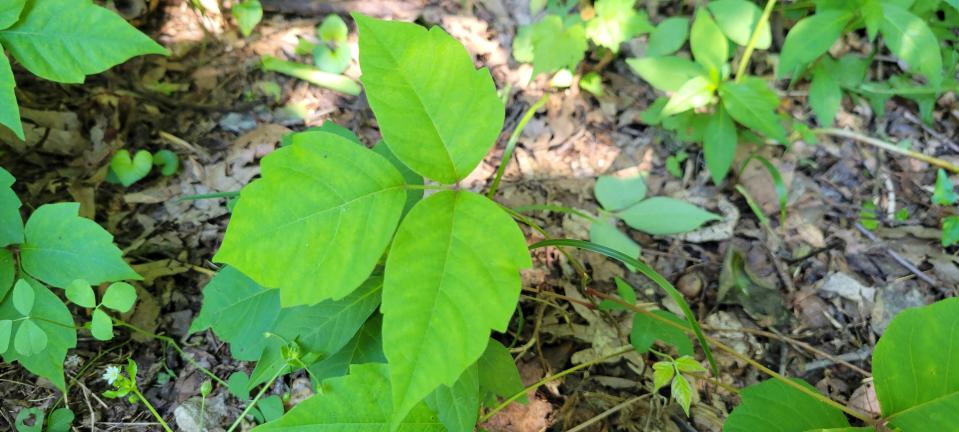Poison ivy in any form can ruin your day. Here's how to get rid of it.
Identifying poison ivy is an important life skill, especially for those who easily develop rashes upon exposure. “Leaves of three, let it be” is often shared as an easy way to identify the plant, but with its many forms and lookalikes, identification is often more challenging.
Poison ivy can be a woody vine that climbs trees, houses and fences, a groundcover or an erect woody shrub. In its vine form, a key identification feature is its aerial roots, making it appear to be a fuzzy rope.
Poison ivy does always have three leaflets, but they may look different depending on the plant. The edges of the leaf may be toothed, incised, lobed or smooth. Leaf size also varies, but a key identification feature is that the middle leaflet is larger than the outer two leaflets and is connected on a longer stalk with the other two leaflets connected closer to the petiole.
Leaves can be many shades of green and in the fall often turn red.

When treating poison ivy, there are three common control methods. The first method is to pull the individual plants. This is most effective when the plant is in its groundcover form. Make sure to wear long sleeves and long pants. Wear gloves and use a plastic bag (grocery sacks work great) to pull out individual plants.
Place the bag around the plant and pull it out. Turn the bag inside out, as you would for pet waste, tie it up and throw it away. When all the plants are pulled, wash your gloves and clothes. This method is especially effective when plants are small and haven’t become well established. If you are highly allergic to poison ivy, you should avoid this method completely.
For vining and shrub forms, cut the main stem and treat the stump with triclopyr. If the plant is vining, wait until the vine has died to remove it from your house, fence or tree. Even dry, dead vines can cause an allergic reaction. Make sure to wear long sleeves and long pants and wash up just as you would with live plants.

Groundcover, vining or shrub forms of poison ivy can be sprayed directly with an herbicide. Glyphosate (Roundup, Killzall Weed and Grass Killer, Nutgrass, Poison Ivy and VineKiller) and dicamba are both effective. Poison ivy is a tough plant and extremely difficult to control.
Repeat applications may be necessary, but always follow label directions. Take special care not to spray non-target plants.
Mowing, weed-eating and burning poison ivy are methods that have the potential to spread the irritating oil (urushiol), risking possible rash to exposed people. Sensitivity to poison ivy can also change over time, so it is best to always approach the plant with caution, even if you have never had a reaction.
Poison oak and poison sumac are not found in Kansas. There are forms of poison ivy that resemble both and there are other plants that can cause rashes and irritation. If you believe you have been exposed to poison ivy or another plant irritant, rinse your skin with clean water and seek medical treatment if necessary.
Ariel Whitely-Noll is the former horticulture agent for Shawnee County Research and Extension.
This article originally appeared on Topeka Capital-Journal: Here's how to identify and get rid of poison ivy

